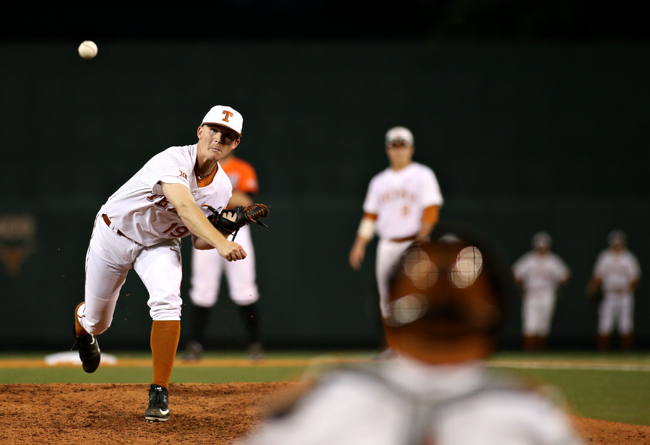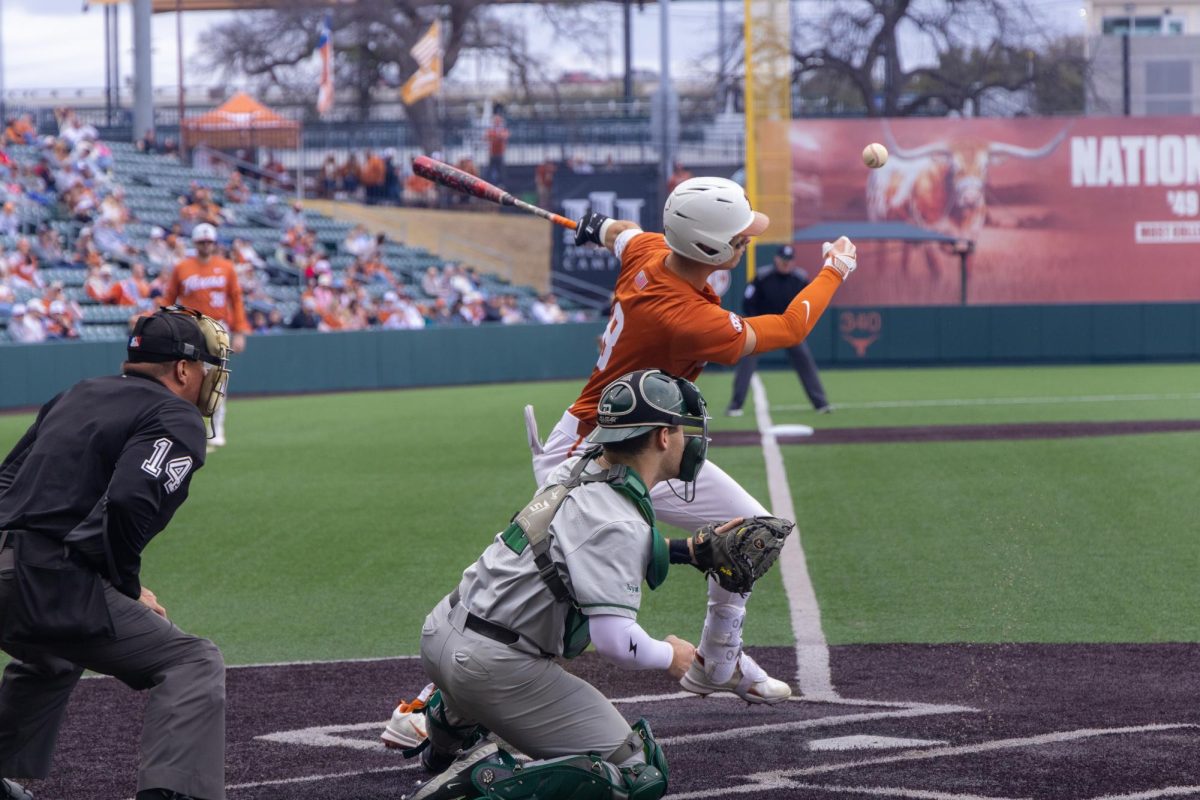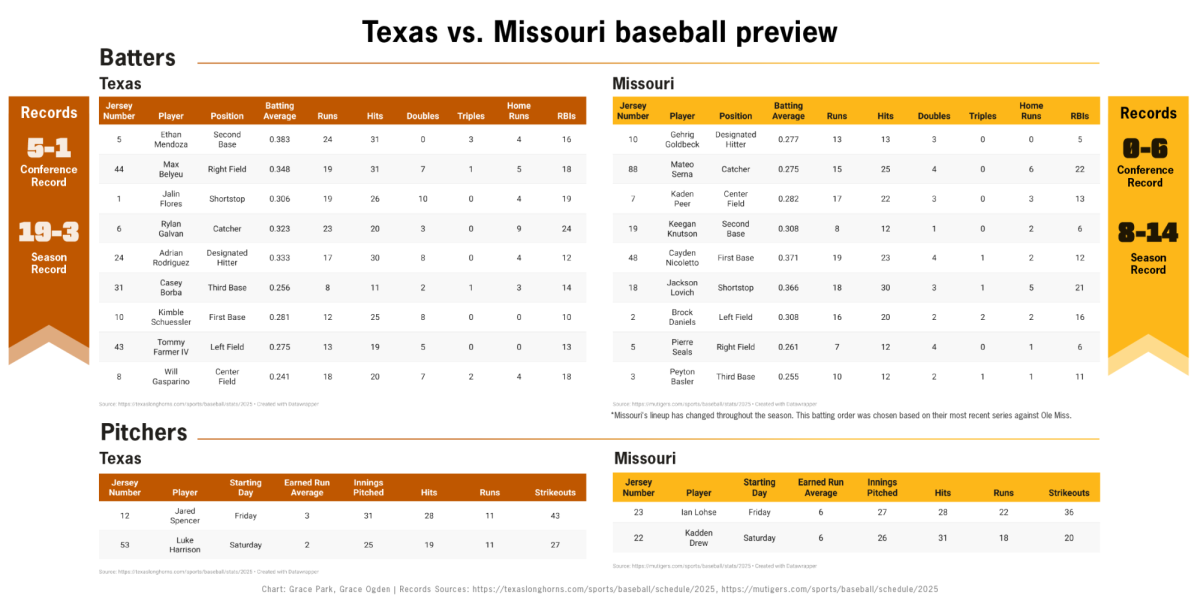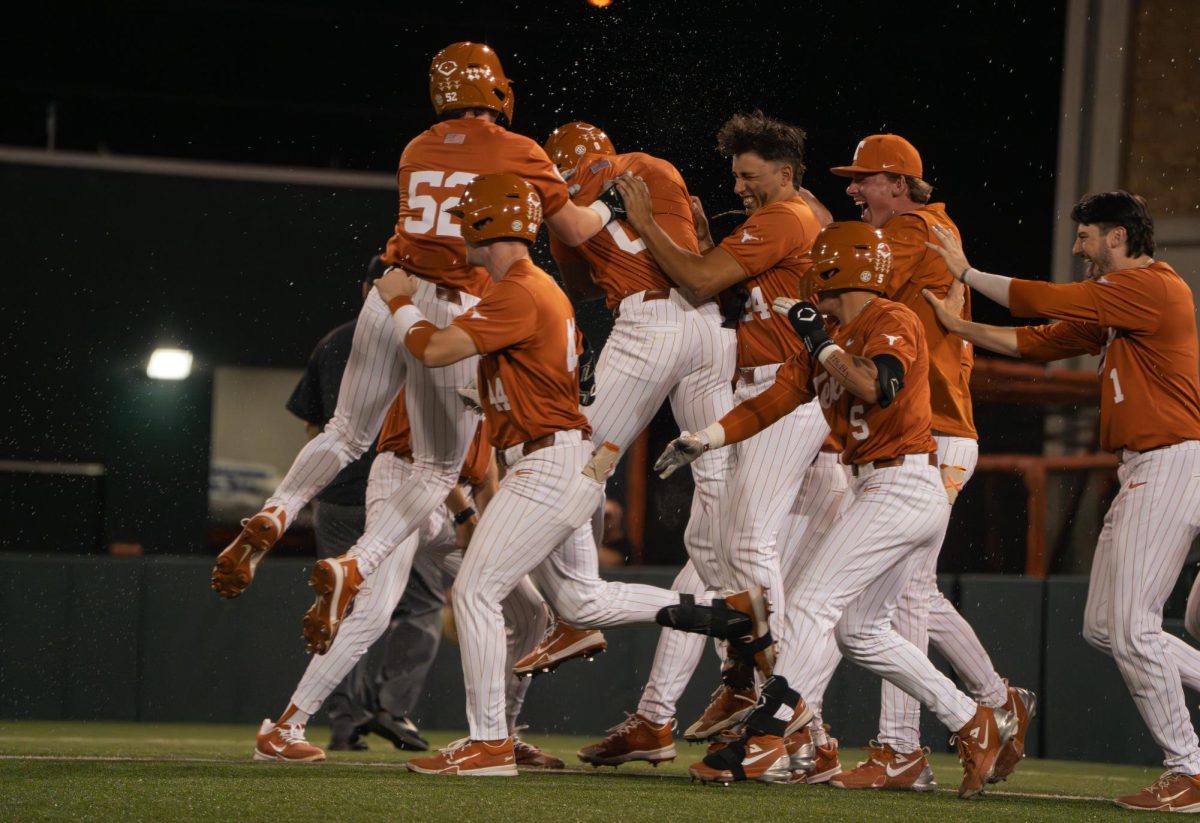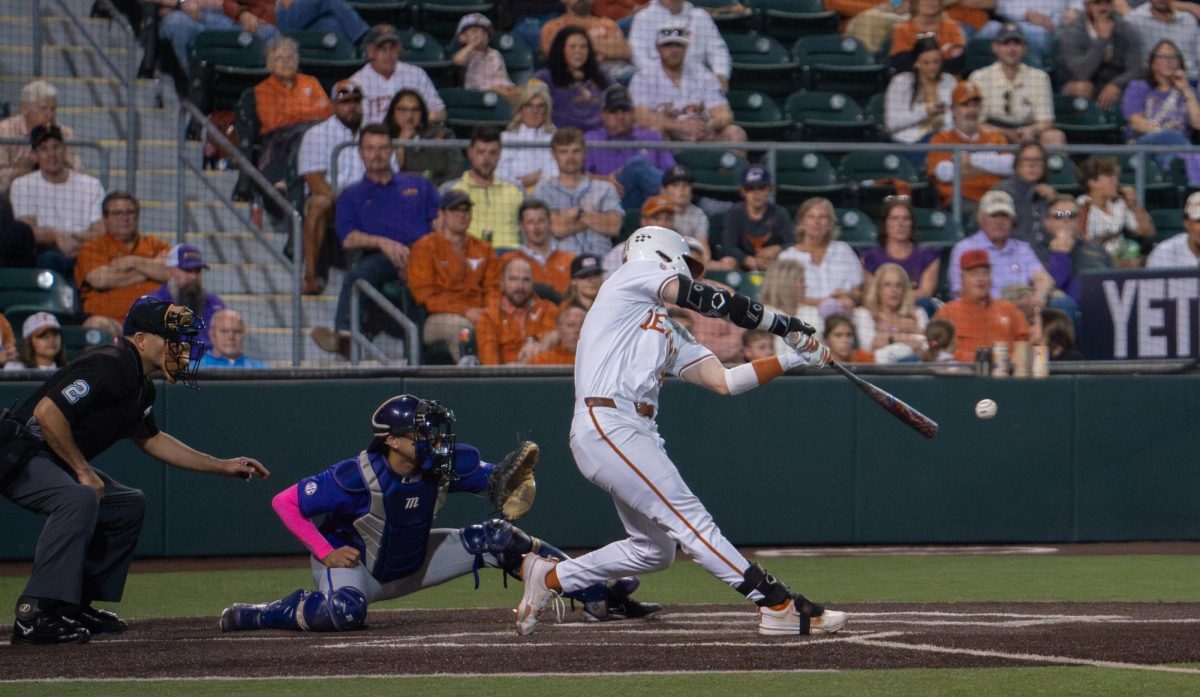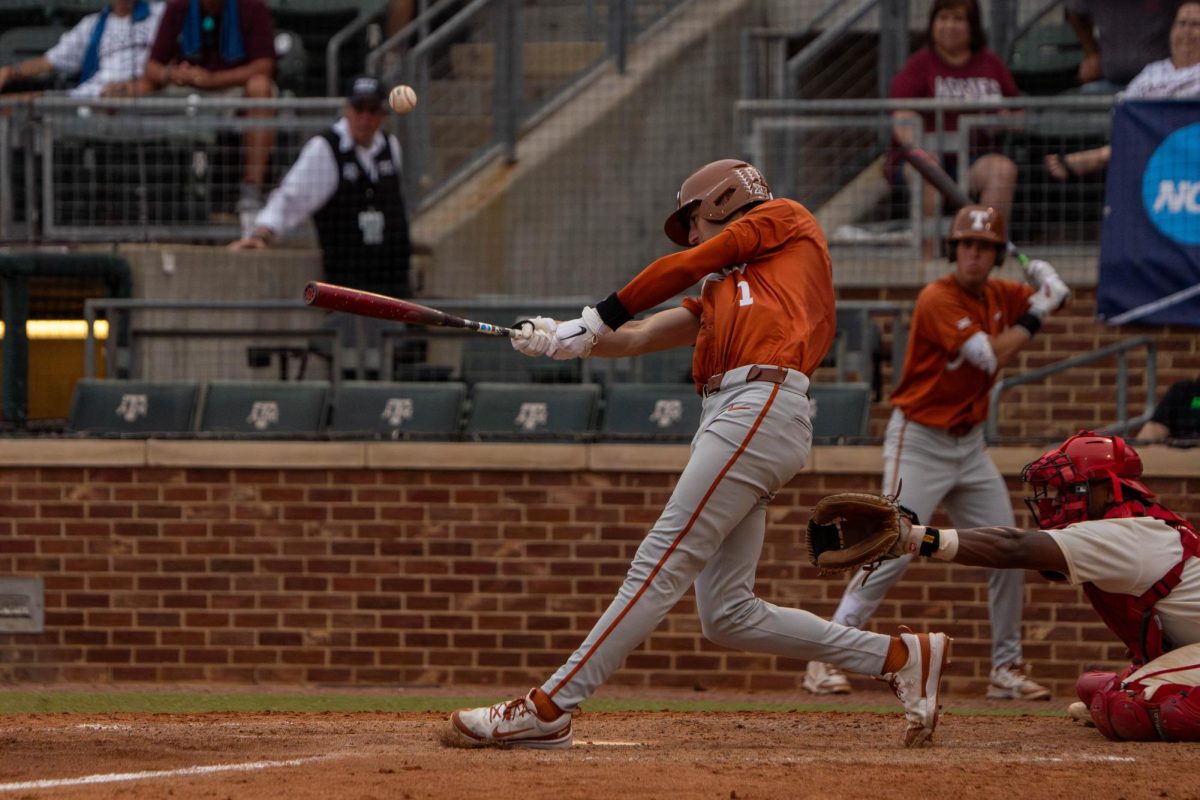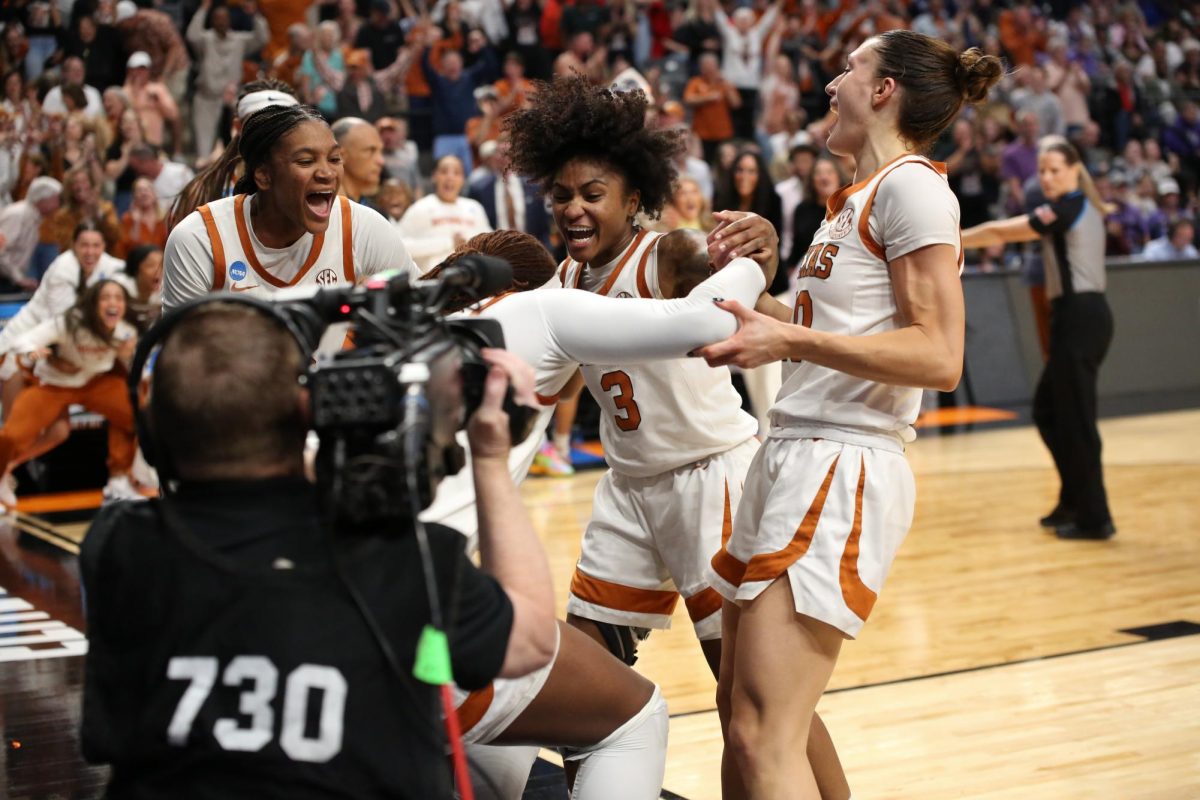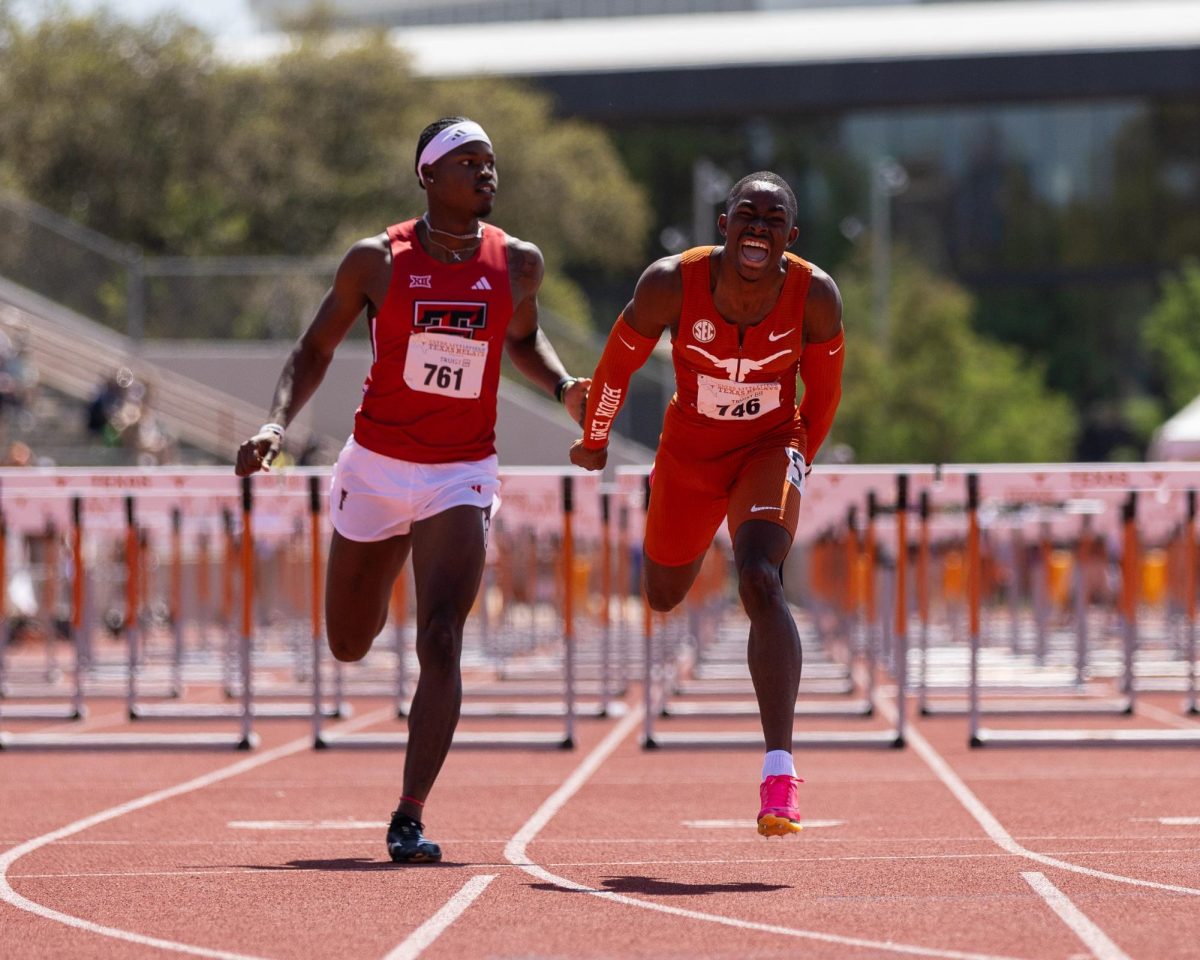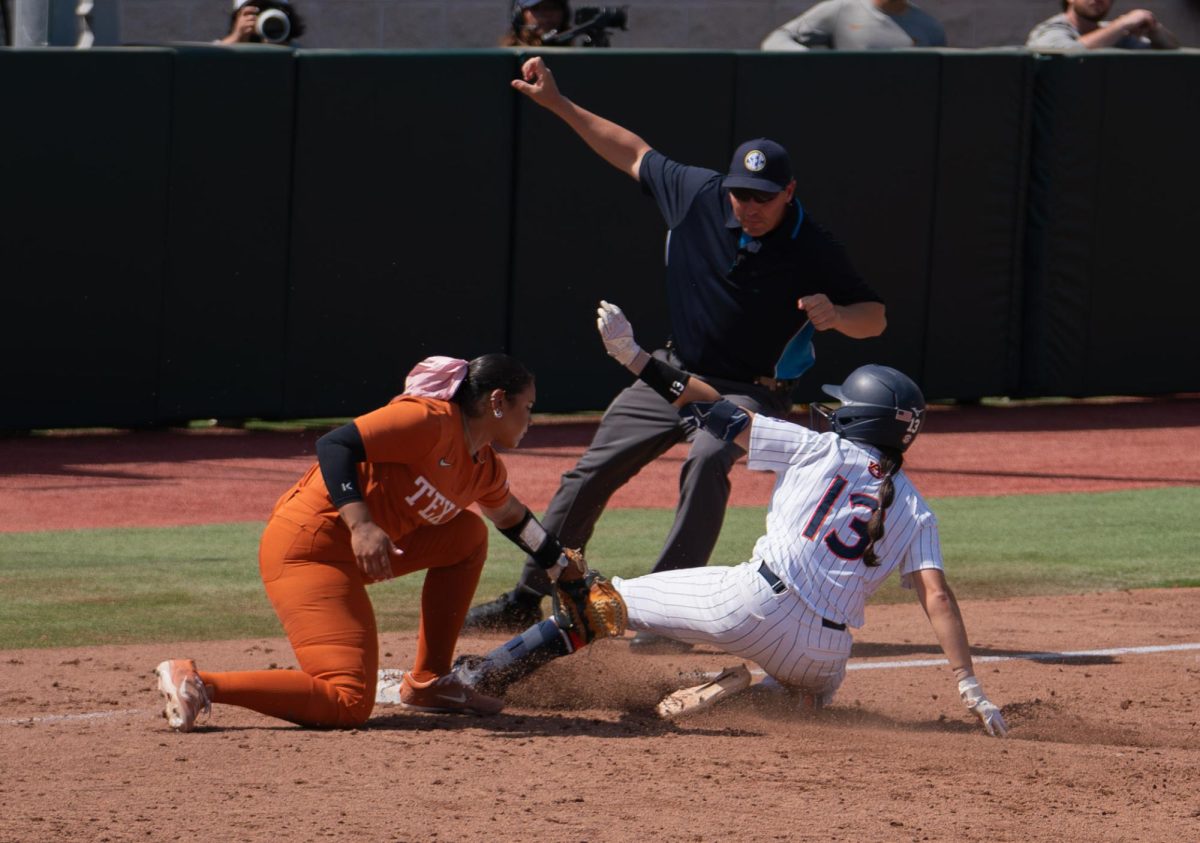As Texas attempts to build a run to Omaha for the College World Series, it has struggled lately in piecing together a large part of the equation — its offense.
The Longhorns went 8–2 in February by scoring 6.8 runs per game and batting .305 as a team. Also, Texas’ bats produced more than just singles, drilling 37 extra base hits in the first 10 games, and the team finished the month with an on-base plus slugging percentage of .847.
This skill helped the Longhorns finish February on a seven-game winning streak as seven regulars in their starting lineup were batting .300 or better. Texas appeared poised to have one of the most potent offenses chalked full of hitters who would be able to produce plenty of runs.
But the Longhorns then began March on a four-game losing streak, managing to score just nine runs and batting .158 as a team. Texas only managed six extra base hits over the four games, dropping their season slugging percentage from .445 to .403.
But the Texas offense would not remain dormant, flexing its muscles over the next 11 games by scoring 62 runs and smacking 37 extra base hits. The Longhorns hit 11 home runs during this span, an average of one homer a game, and that doubled their rate in the first 14 games when they hit seven.
Statistically, this was one of the most effective stretch by the offense this season, as the squad slugged at a .455 clip. And, not surprisingly, the Longhorns had success in the win column with a 9–2 record.
But a subsequent trip to Lincoln, Nebraska, marked the start of a seven-game losing skid, as the Texas offense once again disappeared. It scored just three runs on 12 hits in 95 at bats over 33 innings against Nebraska, and those struggles would carry on outside of Lincoln.
The series against Nebraska marked the beginning a 2–10 stretch for the Longhorns, during which the team’s batting average sunk from .270 to .243. The Longhorns scored only 28 runs over this time, while recording just 15 extra base hits.
The Longhorns are now on pace to be the worst offensive ball club in program history.
Their .243 team batting average would be the worst team batting average since Texas’ batting statistics were first recorded in 1967. Meanwhile through 36 games, the 2015 Longhorns currently hold the lowest on-base percentage in program history
at .336.
While Sunday’s 11-hit performance does provide a glimmer of hope for the Longhorns to heat up offensively, they followed that up with a three-hit showing against Sam Houston State on Tuesday.
With only four conference series remaining and a sub-75 RPI, the Longhorns will need to start hitting drastically better if they are to make the NCAA Tournament for the third time in four seasons.

